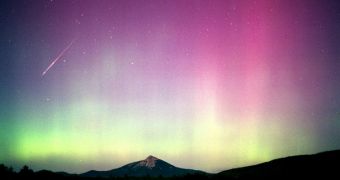All throughout Tuesday and Wednesday (August 3-4), skywatchers at the North Pole will get a real treat. Space weather experts say that the number and intensity of auroras that will appear during these two days will be unusually high for this period. This is due to the fact that a solar eruption took place late Sunday, which spewed a lot of material and radiation from the Sun our way. When this wave of matter hits, most of its will flow alongside Earth's magnetic lines, causing the aurora events to intensify, Space reports.
“This eruption is directed right at us and is expected to get here early in the day on Aug. 4th. It's the first major Earth-directed eruption in quite some time,” says Harvard-Smithsonian Center for Astrophysics (CfA) expert Leon Golub. The expert adds that during the Sunday eruption, countless tons of plasma material – ionized atoms were ejected. Most of that matter is heading our way, and will hit our magnetosphere shortly.
The coronal mass ejection (CME) that gave rise to this situation was discovered with the NASA Solar Dynamics Observatory (SDO), a space telescope whose sole job is to keep an eye on the Sun. “We got a beautiful view of this eruption. And there might be more beautiful views to come if it triggers auroras,” Golub explains. The SDO is NASA's most advanced solar observatory to date. It's able to keep track of the star's action on several wavelengths at the same time, and is especially well suited to observe variations that occur at the extreme ultraviolet (EUV) wavelength range.
At this point in time, the Sun is acting up in a particularly weird manner. Generally, the star “acts” in 11-year-long cycles, which culminate in periods of solar maximum, and minimum, respectively. But, for the past couple of years, it has not exited the solar minimum stage. At the end of 2009 and the beginning of 2010, the Sun began showing signs of activity, but the number of CME and solar storms it experienced thus far is still well below normal.

 14 DAY TRIAL //
14 DAY TRIAL //